Foxes are a widespread animal belonging to the genus Vulpes in the family Canidae. There are many different species of foxes in the world, with different sizes, coat colors, habitats, and habits. Here are some common fox species and their characteristics:
Distribution: The red fox is the most common fox species and is widely distributed, almost all over the world, including Europe, Asia, North America, and parts of Australia.
Size and Characteristics: The red fox is medium-sized, with a body length (excluding the tail) usually between 45-90 cm, and a long tail that is usually half its body length or more. The coat color is mostly red, with a lighter belly and chin, and a distinct white tip on the tail. Red foxes have large, pointed ears and golden eyes.
Habitat and Habits: They are highly adaptable and can survive in a variety of environments, including forests, grasslands, cities and suburbs. Red foxes are nocturnal animals and mainly feed on small mammals, birds and insects.
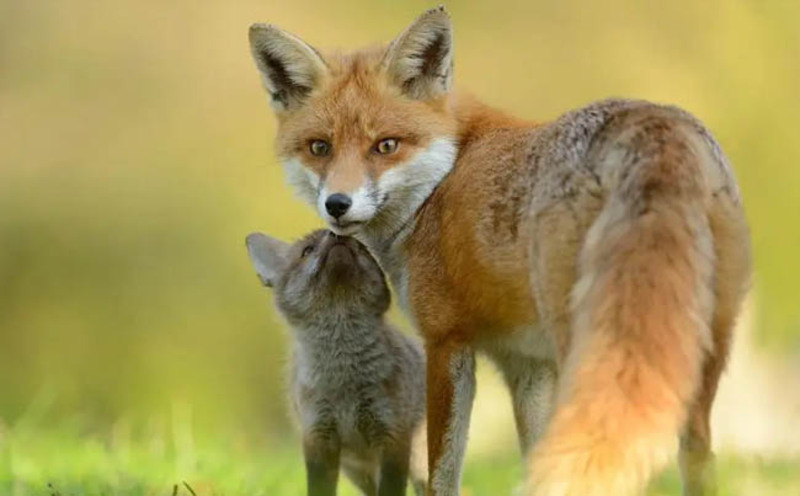
Distribution: Corsoid foxes are mainly distributed in the Sahara Desert and its surrounding areas in North Africa.
Size and Characteristics: Corsoid foxes are small in size, about 40-50 cm in length, and their tails are about 30-40 cm long. The most notable feature of the Corsac fox is its large, pointed ears, which allow it to better dissipate heat in the hot desert environment. The fur color is usually light yellow or sandy.
Habitat and habits: Corsac foxes are adapted to the desert environment and are good at digging holes to escape the heat and avoid predators. They are nocturnal animals and mainly feed on small mammals, insects, birds and plants.
Distribution: Alaskan foxes are mainly distributed in the Arctic region, especially in cold areas such as Alaska, Canada and Greenland.
Body type and characteristics: Alaskan foxes have a thick coat of white fur to help them stay warm in cold environments. In the summer, their fur becomes more gray-brown. Alaskan foxes are medium-sized and have short, furry tails.
Habitat and habits: They live in extremely cold Arctic regions, usually on snow and ice. Alaskan foxes are omnivores, feeding on small mammals, birds, marine life, and plants.
Distribution: Silver foxes are mainly distributed in North America and parts of Europe. They are a variant of the red fox.
Body shape and characteristics: The silver fox has dark gray or black fur with silvery white spots, showing a unique luster. Their body shape is similar to that of the red fox, but their fur color and appearance are quite different.
Habitat and habits: The living habits of the silver fox are similar to those of the red fox. They are highly adaptable and can survive in forests, grasslands and urban areas.
Distribution: Indian foxes are found in India, Bangladesh, and Pakistan.
Size and characteristics: They are relatively small, about 50-60 cm long, with a short tail, usually not exceeding 40 cm. The fur is mostly light gray or brown, and the tail has a black tip.
Habitat and habits: Indian foxes are adapted to a variety of environments such as grasslands, savannas, and forests, and mainly feed on small mammals, reptiles, birds, and insects.
Distribution: Vulpes procyonoides are found in East Asia, especially in China, Japan and the Korean Peninsula. Their native habitat is temperate and subarctic regions.
Body shape and characteristics: Vulpes procyonoides have a raccoon-like appearance, usually with a circle of black markings on their face. They are about 50-60 cm long, with a relatively short tail and gray or brown fur.
Habitat and habits: Vulpes procyonoides are adapted to a variety of environments, usually living in forests, grasslands and wetlands. They are omnivorous and feed on fruits, small mammals, birds and insects.
Distribution: Arctic foxes live in and around the Arctic Circle, such as Greenland, Canada, and Northern Europe.
Body size and characteristics: Arctic foxes are small and adapted to cold climates. Their fur is thick white in winter, turning gray or brown in summer. Their tails are long and fluffy.
Habitat and habits: Arctic foxes live in extremely cold Arctic regions, are good at digging holes in the snow, and mainly feed on small mammals, birds, and shellfish.
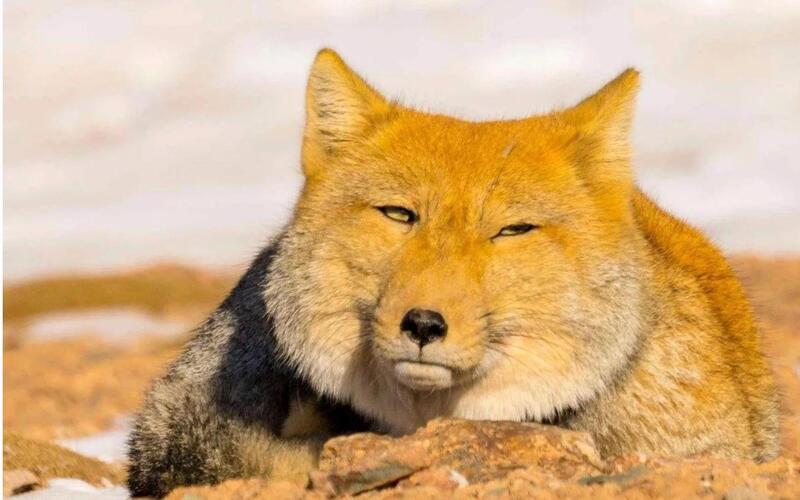
Foxes play an important role in the ecosystem. As mid-level predators and scavengers in the food chain, they have multiple impacts on the maintenance of ecological balance. Specifically, the ecological role of foxes is mainly reflected in the following aspects:
Foxes are predators in the food chain, especially for small mammals, birds, insects and reptiles. They control the number of these species by preying, thereby affecting the species diversity in the ecosystem.
Control small mammal populations: Foxes especially feed on rabbits, voles and other small mammals, helping to control the number of these species and prevent them from over-breeding and destroying vegetation.
Impact on bird and insect populations: Foxes also prey on bird eggs, chicks, and some insects, which plays a positive role in maintaining the health of bird and insect communities and preventing over-reproduction of certain species.
Foxes are typical scavengers, eating dead animal carcasses. This not only helps clean up carcasses in the ecosystem, but also prevents carcasses from rotting and spreading diseases.
Dead scavengers: By eating dead animals, foxes help speed up the decomposition of organic matter and release energy and nutrients back into the ecosystem.
Reducing the spread of pathogens: By eating carcasses, foxes help reduce the spread of pathogens or parasites that grow due to decay, reducing the burden of pathogens in the ecosystem.
When foraging, foxes eat some fruits and plant seeds that may not be fully digested during their digestion or excreted through feces. In this way, foxes indirectly participate in the spread of plants, especially those that rely on animals for dispersal.
Promoting plant reproduction: By eating fruits and fruits, foxes help plant seeds spread to a wider area, which has a positive impact on the growth and diversity of plant populations.
As predators and scavengers, foxes play the role of "balancer" in nature. They not only control the number of certain animal populations, but also indirectly affect the living environment of other species through the food chain. By regulating the populations of small mammals and birds, foxes help maintain the species balance of the ecosystem and prevent some species from over-breeding and damaging the ecological environment.
Avoiding overpopulation of species: Foxes help maintain stability in the ecosystem by preying on overpopulated species (such as rabbits or voles) and avoiding over-eating or excessive food competition.
Foxes are also considered an indicator species of environmental health. They are very sensitive to changes in the habitat environment, and the number and health of fox populations can reflect the health of the ecosystem.
Indicators of ecological health: If the fox population decreases or has health problems, it may indicate environmental deterioration in the habitat or problems in the food chain, which provides important clues for ecological protection and environmental monitoring.
Foxes also have important significance in human culture, especially in folklore, literature, religion and art. Foxes are seen as symbols of wisdom, cunning and mystery. In some areas, the existence of foxes has also had a profound impact on people's ecological cognition and cultural heritage.
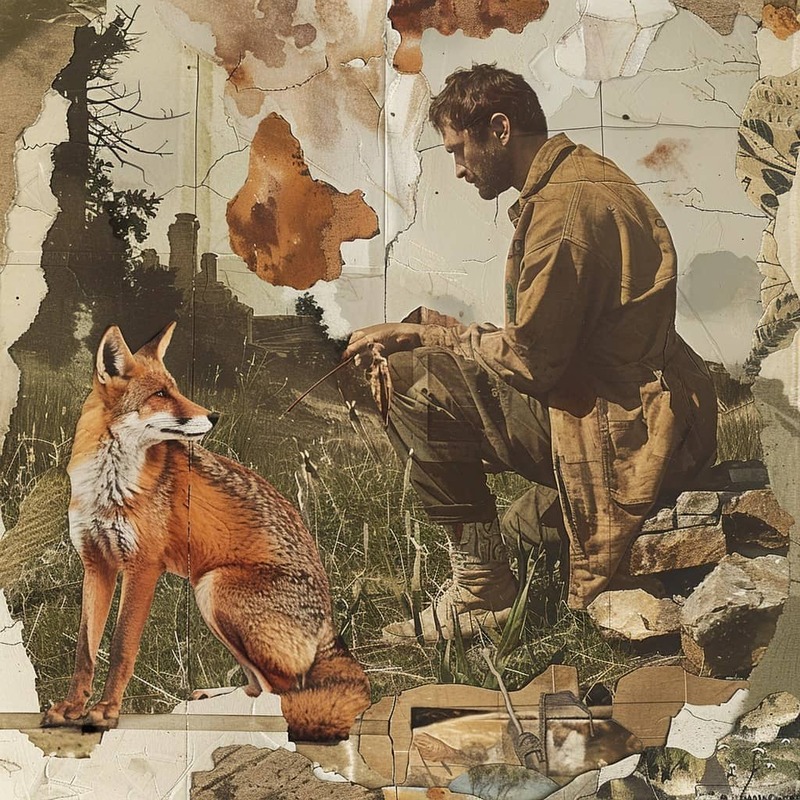
The evolution of the relationship between foxes and humans is a complex and multidimensional process, covering the symbiosis and hunting in primitive times, to modern cultural symbols, pet breeding, and interaction in agriculture and environmental management. The following are several key evolutionary stages of the relationship between foxes and humans:
In the early history of mankind, foxes were first regarded as prey. Ancient humans lived by hunting, and foxes became a challenging prey due to their alertness and flexibility. In some areas, fox meat was used as a food source, especially in winter when food was scarce.
Hunting activities: Foxes were considered difficult prey to catch, helping early humans develop hunting skills. They have a certain symbolic meaning in ancient hunting culture.
Fur utilization: Fox fur became an important material for ancient humans because of its softness and high commercial value, especially in cold areas, fox fur was often used to make clothing and cold-proof equipment.
With the rise of agricultural society, human lifestyles changed, and the role of foxes gradually changed. Foxes began to be seen as a threat to farmland and poultry, especially because they would hunt poultry, birds or eat crops.
Foxes as pests: In some agricultural societies, foxes were considered pests because they would invade farmland or attack poultry, affecting food production. Many farmers would try to drive away or kill foxes to protect their livestock and crops.
Control the number of foxes: In order to reduce the threat of foxes to poultry and crops, many places have carried out systematic hunting and trapping activities, and the number of foxes has been controlled in some areas.
With the development of society, foxes gradually broke away from the role of a simple food source and pest and became an important symbol in human culture. The fox's wisdom, cunning, and alertness make it a symbol of wisdom and cunning in many cultures.
Myths and Legends: Foxes play an important role in myths and folklore around the world. In many cultures, foxes are often shrewd and cunning characters, representing cleverness and strategy. For example, in European folk tales, foxes are often portrayed as cunning animals that cleverly escape capture or obtain resources.
Literature and Art: Foxes often appear in literary and artistic works as symbols of wisdom, wit, and even insidiousness. For example, "The Fox and the Grapes" is a famous story in Aesop's fables, which conveys the philosophy that "what cannot be obtained is often depreciated" through the behavior of the fox.
As time went on, the relationship between foxes and humans began to change, especially in the late 20th century, when the concept of foxes as pets began to emerge. Through the domestication of foxes, especially Russia's "Silver Fox Project", scientists studied the behavioral characteristics of foxes and explored the relationship between humans and animals.
Fox domestication experiment: In Russia, scientists domesticated foxes through selective breeding and studied the relationship between foxes and humans. After decades of domestication, researchers successfully bred a fox with a gentle personality and friendly to humans, which provided scientific basis for the possibility of foxes as pets. Although these foxes are not fully domesticated like dogs, they show canine-like behaviors, such as tail wagging and closeness to humans.
Foxes as pets controversy: In some countries, foxes are kept as pets, although they are not traditionally kept as household pets. Keeping foxes as pets has caused ethical and legal controversy in some areas, and many people believe that foxes are still too wild to be fully domesticated.
With the increase in environmental awareness, people's views on foxes have changed. Foxes are gradually regarded as important members of the ecosystem, especially in nature reserves and wildlife protection work, where the role of foxes has gradually shifted to protecting and restoring species diversity.
Ecological role of foxes: Foxes are considered key species in the ecosystem, able to regulate the number of small mammals and promote ecological balance. As predators and scavengers, they help clean up animal carcasses and control pest and rodent populations.
Protecting fox populations: In some areas, foxes are included in the protection list, especially in the face of habitat loss and human activities. Fox habitat protection and population restoration have become an important ecological protection task.
In modern society, foxes have both natural value as wild animals and frequently appear as cultural symbols in advertising, media and brands. They are often used to symbolize wisdom, wit, flexibility and natural charm.
Foxes in brands and advertising: Fox images often appear in brands and advertisements, representing wit, cleverness or uniqueness. For example, some automobile and consumer product brands use foxes as mascots to convey a smart, efficient and agile brand image.
Environmental protection and educational significance: As part of ecological education, foxes help raise public awareness of ecosystem and wildlife protection. In some countries and regions, foxes have also become a symbol of ecotourism and nature conservation, attracting tourists interested in wildlife.
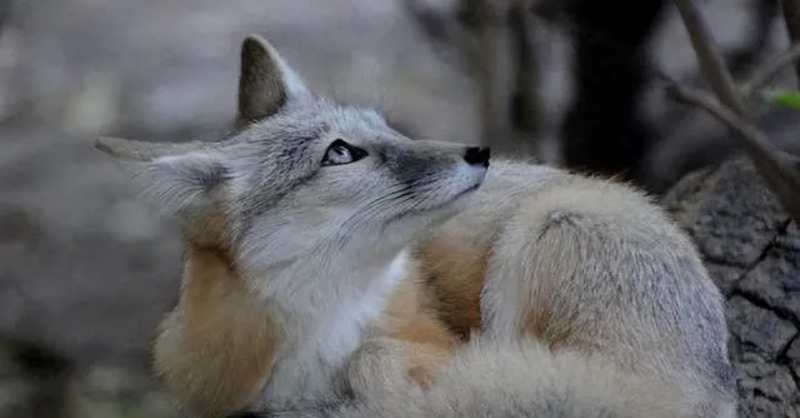
Foxes play an important role in cultures and folk tales around the world. Their image is often associated with wisdom, cunning, agility, and even mysterious and supernatural powers. The cultural symbol of the fox has different meanings in different cultural contexts. The following are some of the symbolic meanings and folk tales of foxes in various cultures:
In Chinese culture, foxes are often associated with the image of "fox spirits". Fox spirits are a common image of monsters, usually depicted as foxes with charm and the ability to transform into human form. Especially in ancient legends, they are often able to seduce and confuse men, thus disrupting social order.
Legend of Fox Spirits: Fox spirits are often depicted as both charming and dangerous in Chinese folk tales. They confuse humans by changing into human form and using magic, especially in ancient literary works such as "Strange Stories from a Chinese Studio", fox spirits are a common theme.
Foxes and Taoism: In Taoism, fox spirits are usually associated with yin and yang, the supernatural, and Taoist magic. Taoists believe that the changes and charm of fox spirits are related to cultivation. Foxes can transform into human form through long-term cultivation and become monsters or spirits with powerful powers.
In Europe, the image of the fox is often associated with cunning, wit and cleverness. The fox is seen as a symbol of wisdom, especially in the literature and fables of the Middle Ages and the Renaissance, where foxes often appear as clever and cunning characters.
Fox in Aesop's Fables: The fox is a typical character in Aesop's fables, usually showing great wisdom and strategy. For example, in the fable "The Fox and the Grapes", after the fox cannot get the grapes, he comforts himself that the grapes are sour, symbolizing the self-comfort and rationalization that humans will make when faced with unattainable desires. This cunning and clever behavior makes the fox a symbol of "smart but cunning" in European culture.
The Fox and the Crow: In another Aesop fable, The Fox and the Crow, the fox uses language to trick the crow into dropping the cheese in its mouth, further emphasizing the fox's cunning and wisdom.
In Japan, the fox (Kitsune) is a very important cultural symbol, often associated with Shinto, witchcraft, and the ability to shapeshift. In Japanese culture, the fox is both a sacred being and a spiritual being with supernatural powers.
Kitsune: Foxes are considered messengers of the god Inari in Japanese mythology. Inari is the god of agriculture, harvest, and commerce. As the incarnation of the god Inari, the fox (Kitsune) has the ability to transform into a human being, and is even believed to have the ability to predict the future and protect. Especially in "Inari Shrine", foxes are very sacred animals, and many Inari shrines have statues of foxes.
Foxes and Monsters: Foxes are often considered monsters with supernatural powers in Japanese folklore. They can transform into human appearance and even control people's thoughts and behaviors. Therefore, foxes have both a sacred side and a terrifying monster image.
In North American Native cultures, foxes are often seen as clever, cunning, and mysterious animals. Foxes often appear in legends and stories as a symbol of wisdom.
Symbol of Wisdom and Cunning: In many North American Native myths, foxes are a symbol of wisdom and cleverness, often using clever strategies to solve problems or overcome difficulties. The fox's cunning and wit often make them heroes or important characters in legends.
The Fox's Connection to Nature: In some Native tribes, foxes are considered animals that are closely connected to nature, representing wildness, freedom, and adaptability in life. Foxes have become a symbol of the intelligent connection between humans and nature by surviving in a changing environment in a clever way.
The image of foxes is also extremely important in Western literature, and often appears in fables, fairy tales and literary works. In these works, foxes often appear in the cultural context of human society with their cleverness, wit and independent thinking.
Foxes in Robinson Crusoe: In Daniel Defoe's Robinson Crusoe, foxes are portrayed as an animal closely related to nature and the human living environment, and they play an important role in the food chain on the desert island.
Foxes in Modern Culture: The image of foxes also frequently appears in modern popular culture. For example, the fox characters in Disney's "The Fox and the Hound" and the movie "Abominable" continue the tradition of foxes being smart and cunning in Western culture.
The cultural symbolism of the fox is diverse, covering aspects such as wisdom, cunning, agility, and fickleness. In many cultures, the fox represents the wisdom to adapt to the environment and the ability to use strategies to deal with complex situations. In addition, the fox is often associated with mystery, temptation, and supernatural powers.
Wisdom and Strategy: The fox is a smart character in many stories, symbolizing the way to achieve goals through wisdom rather than strength.
Transfiguration and Seduction: In many cultures, foxes are believed to have the ability to transform, especially to seduce others by changing their appearance, which also makes foxes closely associated with themes of seduction and temptation.
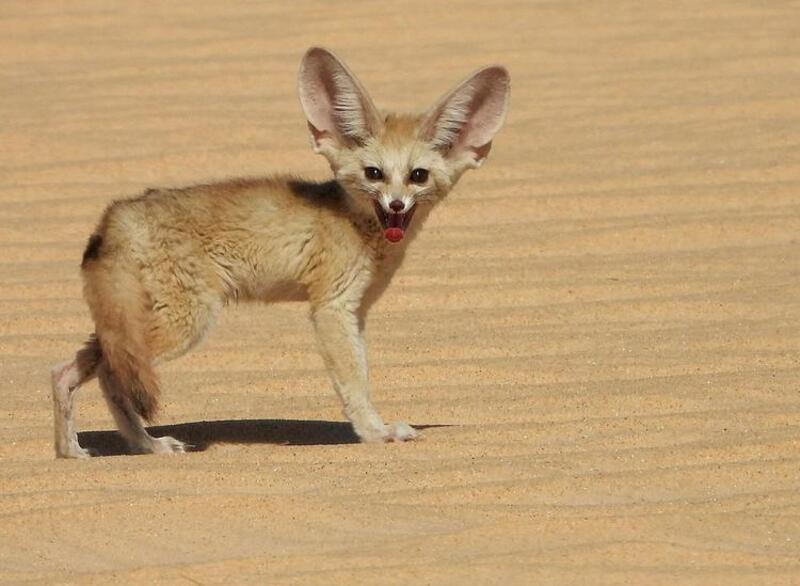
Foxes are highly adaptable animals with multiple survival strategies. They can survive in a variety of different environments, whether it is cities, forests, deserts, or extremely cold areas. Foxes have adaptability and survival strategies that allow them to cope with changing environments, hunting for food, and competition with other species. Here are some of the main adaptations and survival strategies of foxes:
Foxes are omnivores and are able to adjust their food sources to suit their environment. They can adjust their eating habits based on seasonal changes, food availability, and conditions in their surroundings.
Combination of carnivorous and herbivorous: Foxes' diet includes small mammals (such as rabbits and voles), birds, insects, reptiles, and some fruits, berries, and plants. Especially in winter, when prey is scarce, foxes will turn to plant foods, including roots, nuts, and fruits. This diversity of diet allows foxes to survive when food is scarce.
Opportunistic Predator: Foxes are often opportunistic predators, which means they will randomly choose food based on the availability of food in the environment. They are able to catch small animals in motion through quick reactions, and will also eat dead animals depending on the situation.
Foxes are very flexible in their hunting skills, and they are able to adapt to a variety of different prey and hunt through different strategies.
Ambush and Patience: Foxes are often very clever in their hunting methods, waiting for prey to approach and catching them with a quick pounce. Foxes' hunting style is closely related to their alertness, and they are good at detecting the movements of prey and reacting quickly.
Nocturnal: Foxes are mostly dusk or nocturnal animals, and their vision, hearing, and sense of smell are very well developed, especially at night, they can track prey through keen hearing and smell. This nocturnal nature also helps them avoid daytime predators and competitors.
Foxes' habitats are usually highly hidden, allowing them to avoid threats from predators and humans.
Burrows and Dens: Foxes usually dig holes in the ground or use existing caves as habitats, which can provide effective concealment. Foxes may also use tree roots, cracks between rocks, or abandoned buildings as hiding places.
Adaptive habitat selection: Foxes are able to build nests in different habitats, such as in forests, grasslands, and even near urban garbage dumps. Urban foxes use abandoned buildings, underground pipes and other artificial environments as habitats, while in the wild, foxes prefer to choose forest edges or places with abundant food resources.
The reproduction strategy and life cycle design of foxes enable them to effectively ensure the continuation of the population.
High reproduction rate: Foxes usually reproduce once a year, with 4 to 6 cubs per litter, and the breeding season is usually in spring. The female fox will choose a hidden place to build a nest after the pregnancy period and take good care of the cubs until they can survive independently.
Survival skills of cubs: Fox cubs are born blind and helpless, but they grow rapidly within a few weeks and begin to learn how to find food and protect themselves independently. The mother fox will take them hunting and "educate" them to master hunting skills.
Foxes also have very flexible behavior patterns, which allows them to adapt to different living environments.
Lonely and social: Foxes are usually solitary animals, especially adult foxes prefer to live alone and form their own territory. However, in areas with abundant food or during the breeding season, they may form loose social groups with other foxes. Foxes compete fiercely for territory, but they also show some cooperative behavior, especially during the breeding season, when male foxes sometimes help female foxes protect their cubs.
Territorial awareness: Foxes usually have a strong sense of territory, and they mark their territory with urine to prevent other foxes from entering. In this way, foxes reduce conflicts with their own kind and ensure that they can occupy a piece of territory in resource-rich areas.
The adaptability of foxes enables them to survive in a variety of environments, especially in rapidly changing environments.
Urban adaptation: In recent years, with the expansion of human activities, foxes have gradually adapted to urban environments. In cities, foxes are able to survive by eating resources such as garbage, food scraps, and small rodents. Urban foxes are often bolder, sometimes even near humans, and are able to establish habitats in abandoned buildings, underground pipes, and other places.
Adaptability to environmental changes: Foxes are able to adapt to a variety of climatic conditions, from the cold Arctic to warm deserts. In cold areas, foxes grow thick fur to help them maintain body temperature; in hot environments, foxes adjust their activity time to avoid hunting during high temperatures.
The biological characteristics of foxes also provide them with great advantages for survival.
Acute senses: Foxes have very keen senses of smell, hearing, and night vision, allowing them to hunt effectively in the dark. Their sense of smell is particularly well developed, allowing them to track prey or predators from a distance.
Fast running and jumping ability: Foxes have long and powerful limbs and have good running and jumping abilities, allowing them to quickly escape predators or chase prey. The agility of foxes gives them an advantage in both hunting and escaping.
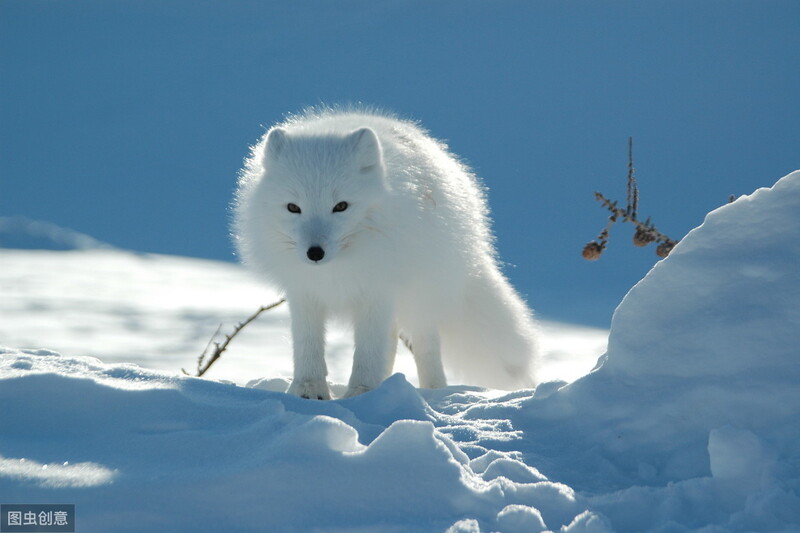
Foxes are called "cunning" animals mainly because of their intelligence in hunting and survival. The "cunning" of foxes does not mean that they are malicious or evil, but because they can usually use wit and strategy to solve problems when faced with challenges, especially in hunting, avoiding predators, and avoiding traps.
Hunting Techniques: Foxes often use "opportunistic" strategies, using quick reactions, stealthy movements, and patient waiting to hunt prey. For example, foxes can quietly approach prey without their prey noticing, and then quickly pounce, showing their flexible hunting skills.
Escape from predators: When faced with predators (such as wolves and birds of prey), foxes will avoid pursuit by quickly running away, changing direction, or using the cover of the environment. They are also good at camouflaging themselves and can confuse their enemies with flexible and maneuverable behaviors.
Wisdom and Deception: In many cultures, the "cunningness" of foxes refers not only to their hunting ability, but also to their wisdom in escaping difficult situations. For example, in some folk tales and fables, foxes often use language and behavior to deceive or seduce others to achieve their own goals.
Therefore, the cunning of foxes refers to their ability to use wisdom to solve problems, especially their clever strategies in hunting and self-protection.
The call of a fox has many meanings, mainly used for communication, marking territory, warning companions or attracting the opposite sex. The call of a fox varies, including screaming, roaring, wailing, etc., and each call has different uses.
Screaming: The scream of a fox is usually used to mark territory or as a warning signal. This kind of call often occurs at night and can be heard from a long distance, and can sometimes be mistaken for a human scream. It can be used to drive away other foxes or competitors.
Mating calls: During the breeding season, foxes will make specific calls to attract mates, especially female foxes will make unique calls, and male foxes will respond. Such calls usually contain slight whining and high-frequency sounds.
Communication with cubs: Mother foxes and cubs also communicate with each other. Mother foxes will communicate with cubs through low-frequency sounds or short barks, and cubs will make small whining sounds to seek care from their mothers.
The calls of foxes convey rich information, which is used for territory defense, social interaction, reproduction, etc.
Foxes are highly adaptable animals that have a wide range of habitats. They can be found almost everywhere in the world, with the exception of Antarctica. The habitats of foxes vary from species to species, but in general, foxes are able to adapt to a variety of different environments, including:
Forests: Foxes often live on the edges of forests or in grasslands where there are abundant food resources and suitable habitats. They can find shelter in trees and bushes and hunt in these environments.
Grasslands and Wilderness: Some foxes, especially desert foxes and savannah foxes, live in open grasslands, deserts, and wastelands, digging burrows in sand dunes or bushes as habitats.
Urban Environments: Foxes have successfully adapted to urban environments, especially city suburbs and urban parks. They use food resources left behind by human activities, such as garbage and pet food, and are also able to find habitats in urban buildings, abandoned underground facilities or green belts.
Mountain and Polar: Some fox species, such as the Arctic fox, live in cold polar regions and have adapted to the extremely cold environment. Their fur is very thick, which helps them to withstand the cold and forage for food in these areas.
Foxes are able to flexibly adapt to a variety of habitats, and with their excellent survival ability, they can find a place to live in almost all types of ecosystems.
Although foxes are predators, they also have many natural enemies, especially large or strong predators. The main natural enemies of foxes include:
Wolves: Wolves are one of the main natural enemies of foxes, especially in northern and cold regions, where wolf packs will unite to hunt foxes. Wolves are usually stronger than foxes and can easily defeat foxes and occupy their territory.
Birds of prey: Some large birds of prey (such as eagles, falcons, etc.) will also prey on foxes, especially fox cubs. Raptors attack from the air and quickly catch foxes.
Large cats: Cats such as bobcats and jaguars may also prey on foxes, especially in places where the fox's habitat overlaps with these large cats.
Humans: Foxes also face threats from humans in some areas. Foxes may be hunted, driven away, or lose their habitat due to habitat destruction. Hunting by humans (such as the fur trade) and urban expansion also pose a threat to fox populations.
Foxes need to be vigilant to these natural enemies when surviving in the wild. They usually avoid threats by hiding, running fast, and being active at night.
Foxes play an important role in the ecosystem. Their behavior habits directly or indirectly affect the ecological balance. Here are some key impacts of foxes in the ecosystem:
Control rodent populations: Foxes are one of the main predators of rodents, such as mice and voles. Foxes control their populations by preying on these small mammals, thereby preventing these animals from over-reproducing and causing damage to plants and agriculture. The predatory behavior of foxes helps maintain the balance of species in the ecosystem.
Influence on plant dispersal: Although foxes are mainly predators, they also eat some fruits and seeds. After eating, foxes will excrete undigested seeds in different locations, which helps the spread of plants and the diffusion of seeds.
Population competition: There is a competitive relationship between foxes and other carnivores (such as wolves, falcons, etc.), and they compete for food resources and habitats. In some areas, the excessive number of foxes may pose a threat to other animal populations and affect the ecological balance.
Influence on prey behavior: The predatory behavior of foxes will prompt some prey (such as small mammals) to evolve stronger escape capabilities. Their existence accelerates the adaptive evolution of species in the ecology.
As a predator and decomposer in the food chain, foxes' behavior habits play an important role in maintaining ecological balance, regulating species numbers and affecting the energy flow of the ecosystem.
animal tags: Foxes
We created this article in conjunction with AI technology, then made sure it was fact-checked and edited by a Animals Top editor.